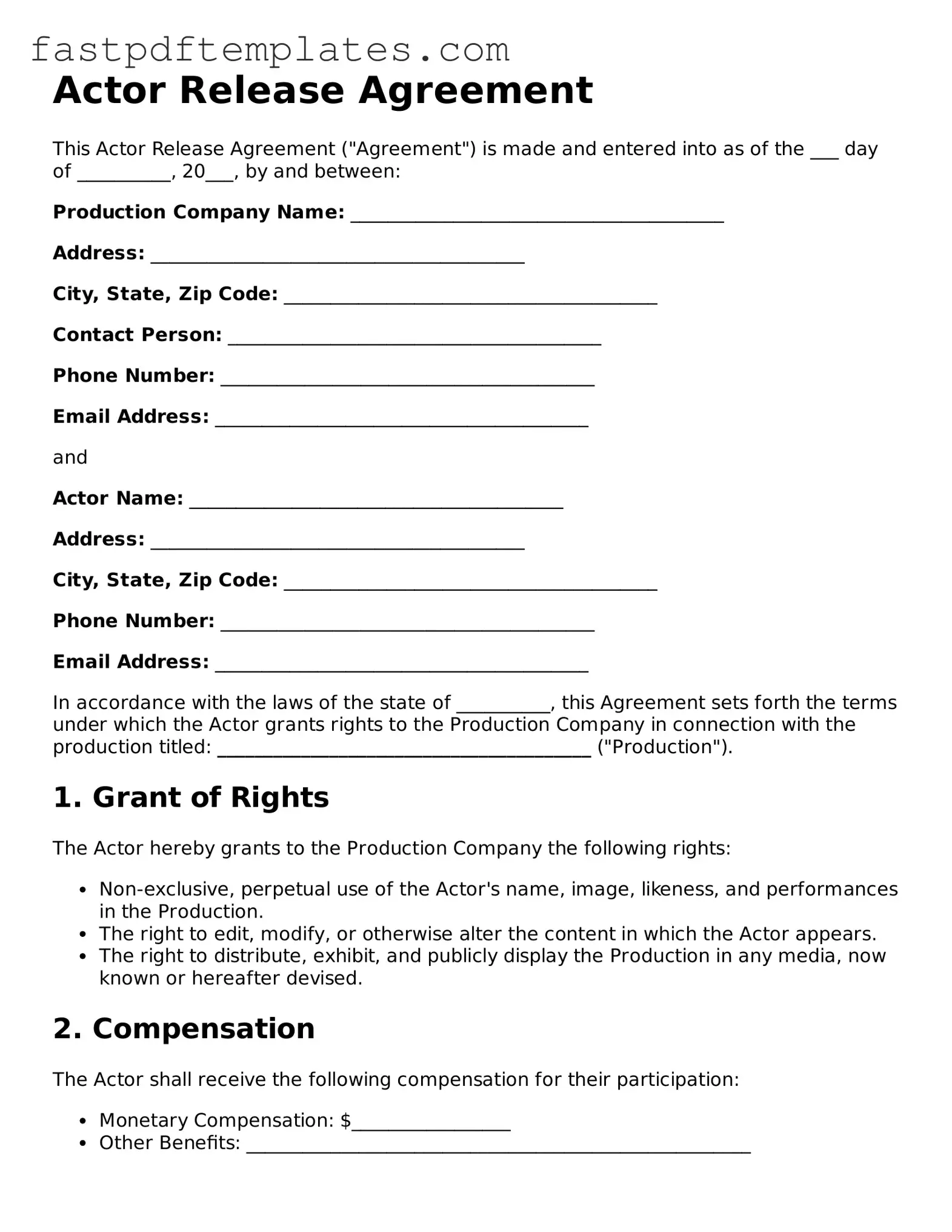Actor Release Agreement
This Actor Release Agreement ("Agreement") is made and entered into as of the ___ day of __________, 20___, by and between:
Production Company Name: ________________________________________
Address: ________________________________________
City, State, Zip Code: ________________________________________
Contact Person: ________________________________________
Phone Number: ________________________________________
Email Address: ________________________________________
and
Actor Name: ________________________________________
Address: ________________________________________
City, State, Zip Code: ________________________________________
Phone Number: ________________________________________
Email Address: ________________________________________
In accordance with the laws of the state of __________, this Agreement sets forth the terms under which the Actor grants rights to the Production Company in connection with the production titled: ________________________________________ ("Production").
1. Grant of Rights
The Actor hereby grants to the Production Company the following rights:
- Non-exclusive, perpetual use of the Actor's name, image, likeness, and performances in the Production.
- The right to edit, modify, or otherwise alter the content in which the Actor appears.
- The right to distribute, exhibit, and publicly display the Production in any media, now known or hereafter devised.
2. Compensation
The Actor shall receive the following compensation for their participation:
- Monetary Compensation: $_________________
- Other Benefits: ______________________________________________________
3. Release
The Actor hereby waives any rights to inspect or approve the use of their name, image, or likeness in connection with the Production. The Actor also releases the Production Company from any claims or liabilities arising from the use of the Actor's likeness.
4. Governing Law
This Agreement shall be governed by and construed in accordance with the laws of the state of __________.
5. Entire Agreement
This Agreement constitutes the entire agreement between the parties regarding its subject matter and supersedes all prior agreements or understandings.
IN WITNESS WHEREOF, the Parties have executed this Actor Release Agreement as of the date first above written.
Production Company Signature: _______________________________
Date: ______________________________________
Actor Signature: _______________________________
Date: ______________________________________
